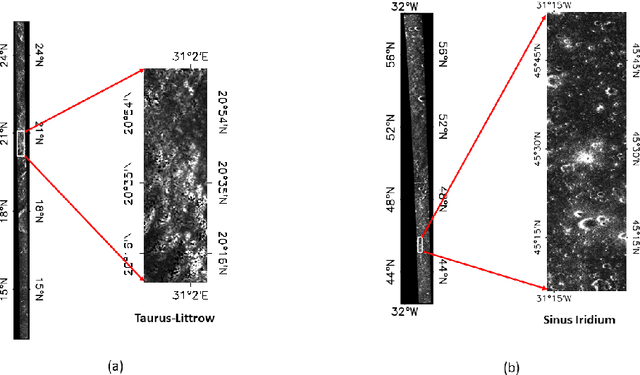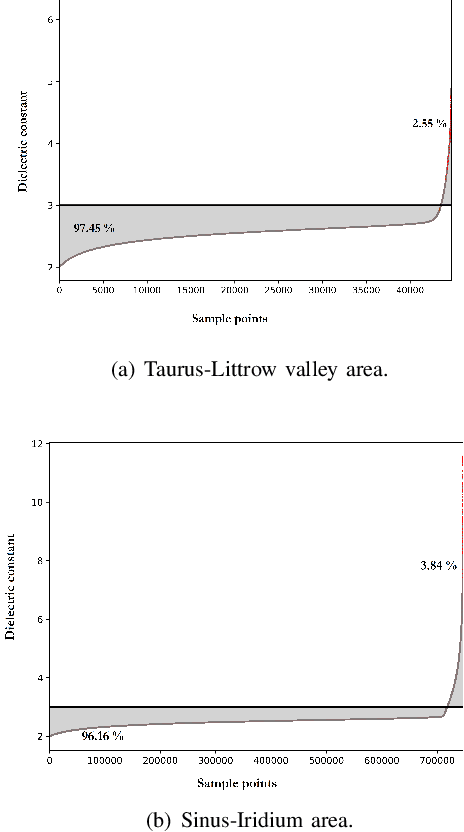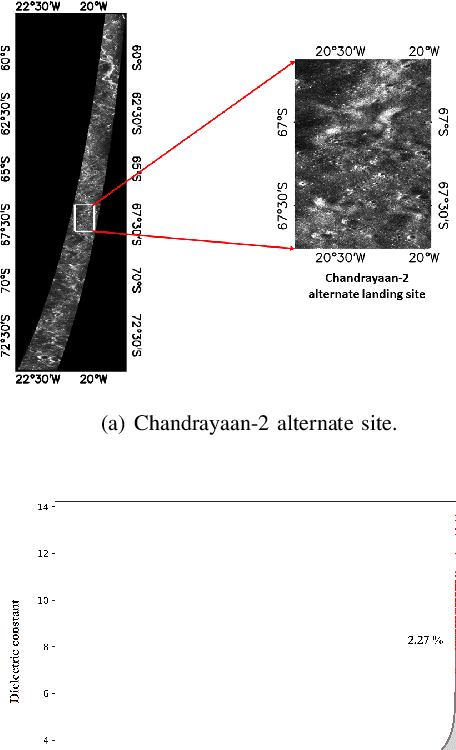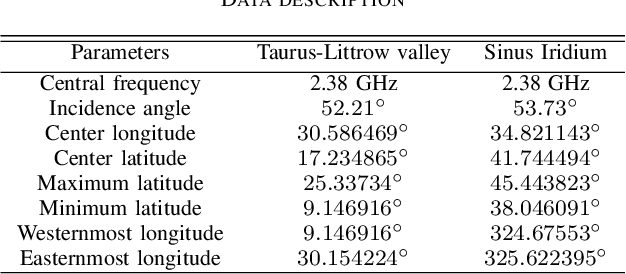Pooja Mishra
Estimation of lunar surface dielectric constant using MiniRF SAR data
May 22, 2021



Abstract:A new model has been developed to estimate the dielectric constant of the lunar surface using Synthetic Aperture Radar (SAR) data. Continuous investigation on the dielectric constant of the lunar surface is a high priority task due to future lunar mission's goals and possible exploration of human outposts. For this purpose, derived anisotropy and backscattering coefficients of SAR images are used. The SAR images are obtained from Miniature Radio Frequency (MiniRF) radar onboard Lunar Reconnaissance Orbiter (LRO). These images are available in the form of Stokes parameters, which are used to derive the coherency matrix. The derived coherency matrix is further represented in terms of particle anisotropy. This coherency matrix's elements compared with Cloud's coherency matrix, which results in the new relationship between particle anisotropy and coherency matrix elements (backscattering coefficients). Following this, estimated anisotropy is used to determine the dielectric constant. Our model estimates the dielectric constant of the lunar surface without parallax error. The produce results are also comparable with the earlier estimate. As an advantageous, our method estimates the dielectric constant without any apriori information about the density or composition of lunar surface materials. The proposed approach can also be useful for determining the dielectric properties of Mars and other celestial bodies.
 Add to Chrome
Add to Chrome Add to Firefox
Add to Firefox Add to Edge
Add to Edge